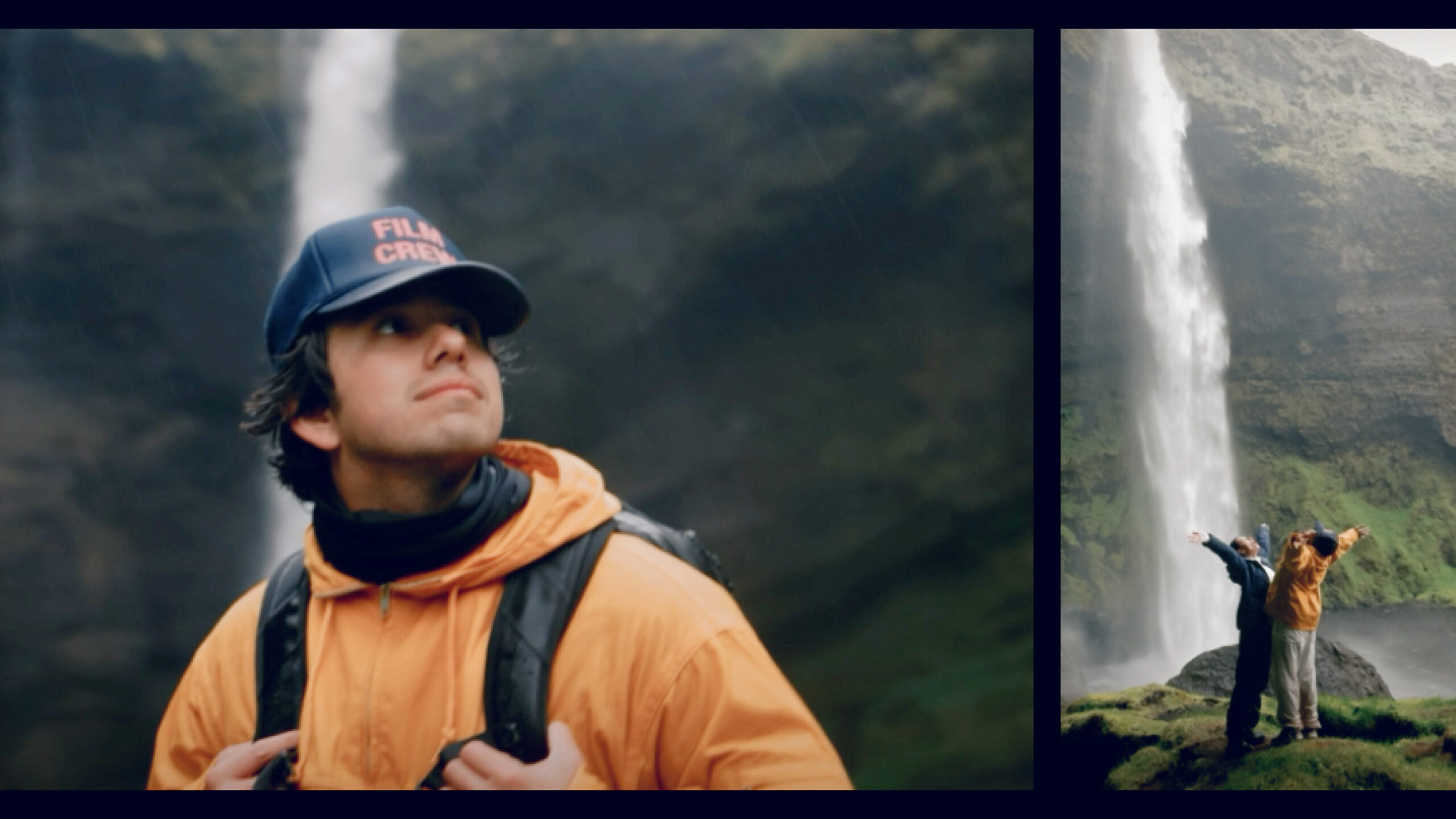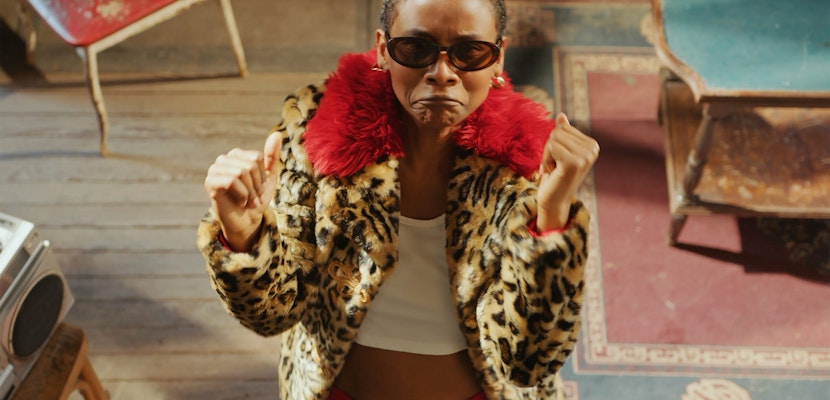Filmmaker Alex Romo recently returned from capturing the mesmerizing sights and sounds of Iceland. We sat down with Alex to learn more about his filmmaking journey and get the inside scoop on effectively incorporating emotional storytelling into your edit.
Alex also broke down his favorite pieces of gear for filmmaking outdoors and some effective editing tips for post-production. Check out his Iceland project and read on to discover more.
Summary
Starting out in filmmaking
Can you tell us about how you first got started in filmmaking? What inspired you to pursue this path, and were there any key moments or influences that shaped your early career?
My filmmaking journey began when I was younger, and I have always had an interest in storytelling. This came through movies, shows, cartoons, anime, you name it. I saw it all as different forms and genres of unique ways to tell a story, which I believe is what we all do today.
Whether you’re having conversations with some friends around a campfire or creating something, it’s all just different mediums to tell a story. I found my medium to be videos. I vividly remember working my first job with my dad at his small family-owned window-tinting shop one summer. I saved the first paycheck he ever gave me and spent it all on a GoPro. From there, I started making a ton of videos.
Anything I could, from hiking to cliff jumping, you name it, I’d be shooting it. With my mom and dad’s support, I could attend my dream school, USC, and become the first in my family to attend college with a business major and a film minor. In my senior year, I was working 3 jobs (shooting video for the USC football team, working for Red Bull, and doing a work-study job at the law library). Then, as if I wasn’t busy enough, I pursued a 4th job and my first real job in the filmmaking world with NBCUniversal.
Like a lot of people, Covid in 2020 was a turning point for me. I lost my job and started to pursue filmmaking full-time. I assisted my brother Paul Romo on fashion photography shoots and built my portfolio. I found myself doing some insane jobs for Lululeon, Google, and other notable brands, and I definitely wouldn’t be where I am today without him.
Working with Motion Array
How did you start working with Motion Array?
One day, I tagged filmmaker and personal inspiration Sam Newton, who is a video of mine on Instagram. He saw it, followed me, and one thing led to another, and we connected to work on some projects. Now, I can call him a good friend, and I definitely owe him much of my success. He introduced me to the team at Artlist and Motion Array, as well as Viewsonic, CanonUSA, and others, and it snowballed from there.
Creative process
How would you describe your creative process when starting a new project?
My creative process when starting a new project follows a similar pattern. The first thing I focus on is what I’m going to say. Whether it’s through a voiceover or some means of communicating a message, I always believe that the story is the most important thing at the center of anything you make.
Typically, I’ll build out my VO/script first. If I have a song, I will precut it, then begin recording my VO or any audio that will be within the edit to start creating different moments/arcs. This creates a solid foundation even before you start shooting or editing and sets you up for success later on. From there, I flesh out the edit visually, including the sound design and color.
Emotional storytelling
How do you approach embedding deep emotional storytelling into your films? Are there specific techniques or elements you use to connect with your audience on a more profound level?
I think that anything we make should have some form of emotional storytelling at its core—something where people can truly resonate with it. My approach to this is a bit more simplified, as I just have honest conversations with myself about whether the content I’m putting out truly reflects me.
When I create any piece of work, I prioritize honesty, realness, rawness, and authenticity. In terms of specific techniques, when I create something, I try to look for those in-between moments rather than just the hero shots. The times when you let that camera run for an extra 15 seconds and capture those extra laughs, smiles, and moments – that’s the deepness you’re looking for. Those little moments end up being the biggest moments in all of my work.
Outdoor filmmaking gear
What are your go-to pieces of gear when filming outdoors, especially in challenging environments? Are there any specific tools or setups that you find essential for capturing the perfect shot?
My go-to pieces include my Sony FX6 or A7SIII, a 24-70mm 2.8, a 50mm 1.2, 70-200mm 2.8, Mavic 3 Pro, an iPhone 15, a phone tripod, and a Samsung SSD. If I’m using the A7SIII, I also have my Polar Pro Variable NDs.
I tend to run the 50mm 1.2 on my FX6 if I’m backpacking or out in these challenging environments. Then, if I ever need any wide still-establishing shots, I’ll quickly throw my iPhone 15 onto my tripod, shoot in LOG, and use that to capture quick shots. If I have my A7SIII, I’ll shoot photos on it, but I also think the iPhone does an incredible job in terms of photos.
If the conditions prove to be more favorable, I also have the DJI Ronin RS3 Pro, Nanlites, or more. However, I like to keep my gear as compact and light as I can. I am a firm believer that the best gear you have is whatever you have on you at the current moment. Whether that be a DSLR or a phone, nowadays, you can make incredible content with anything.
Lighting and sound tips
Filming outdoors can come with unpredictable lighting and sound conditions. What tips can you share for managing these variables and ensuring high-quality footage?
When it comes to lighting and sound in outdoor environments, you never know what you are going to get. To combat this, I always carry some type of light in my kit. Right now, I carry my LumeCube Panel light. Additionally, the fact that light tends to be so unpredictable outdoors is why I favor Sony as my brand of choice regarding my cameras. The dual native ISO in my cameras allows me to somewhat “see in the dark” with non-grainy footage.
When it starts to get too dark, I’ll switch to my 50mm 1.2 since, while also using a 12800 ISO, and just like that, I can get clear footage at some of the darkest hours. Knowing your camera’s limitations and settings, combined with the right lenses, is important to ensure high-quality footage.
In terms of sound, I can usually add sound design in the worst case, but if there is something I need in real-time, I also carry the Rode II Wireless Mics in my kit. I was recently in Iceland and had to shoot a sit-down talking head video for B and H, but it was so windy in the landscape. I laved myself up rather than just using a top mic on my cameras and got pretty clear audio.
If that audio had also come out somewhat bad, there are also a ton of AI software now that clean up your audio a ton. Whenever I need to do this, I tend to use Adobe Podcast to solve this issue. Knowing the tools that are at your disposal and how to use them are key in handling issues like this.
Storytelling in natural settings
How do you use the natural environment to enhance your storytelling?
I think the best way to shoot these amazing landscapes is to try and look at them from every angle. Sometimes, these locations have been shot over and over, so you have to ask yourself, how can I make my work feel different? How can I use the same environment thousands of people have shot at before and make it my own? If I have time, the best thing I like to do is scout a bit. This might come as an on-field producer-type role in a larger production, but I’m very fortunate to have a girlfriend who specializes in creating the best itineraries.
Are there any particular strategies you use to weave outdoor settings into the emotional arc of your film?
When I was back in film school, I learned about how you can emotionally affect your viewer through editing itself. What I mean is not just creating certain scenes that are happy or sad, but more so the sequences and types of shots can make a person feel a certain type of way. Going from a medium shot to a close-up shot, gradually drawing your viewer in, but then intercutting a wide shot as a moment for them to breathe, then going with an even closer shot to build up that emotional tension. Another example is the use of lines. Certain parallel lines in scenes tend to put viewers at ease, while certain crossing or perpendicular lines create tension subconsciously in their minds.
Looking for these types of compositions in natural settings or how certain natural settings can play a role in your films is key to creating emotional arcs. In essence, anticipating your edit and using the environment as a catalyst for the message you want to send.
Motion Array also has loads of video assets to help add nature scenes to your next video.



























